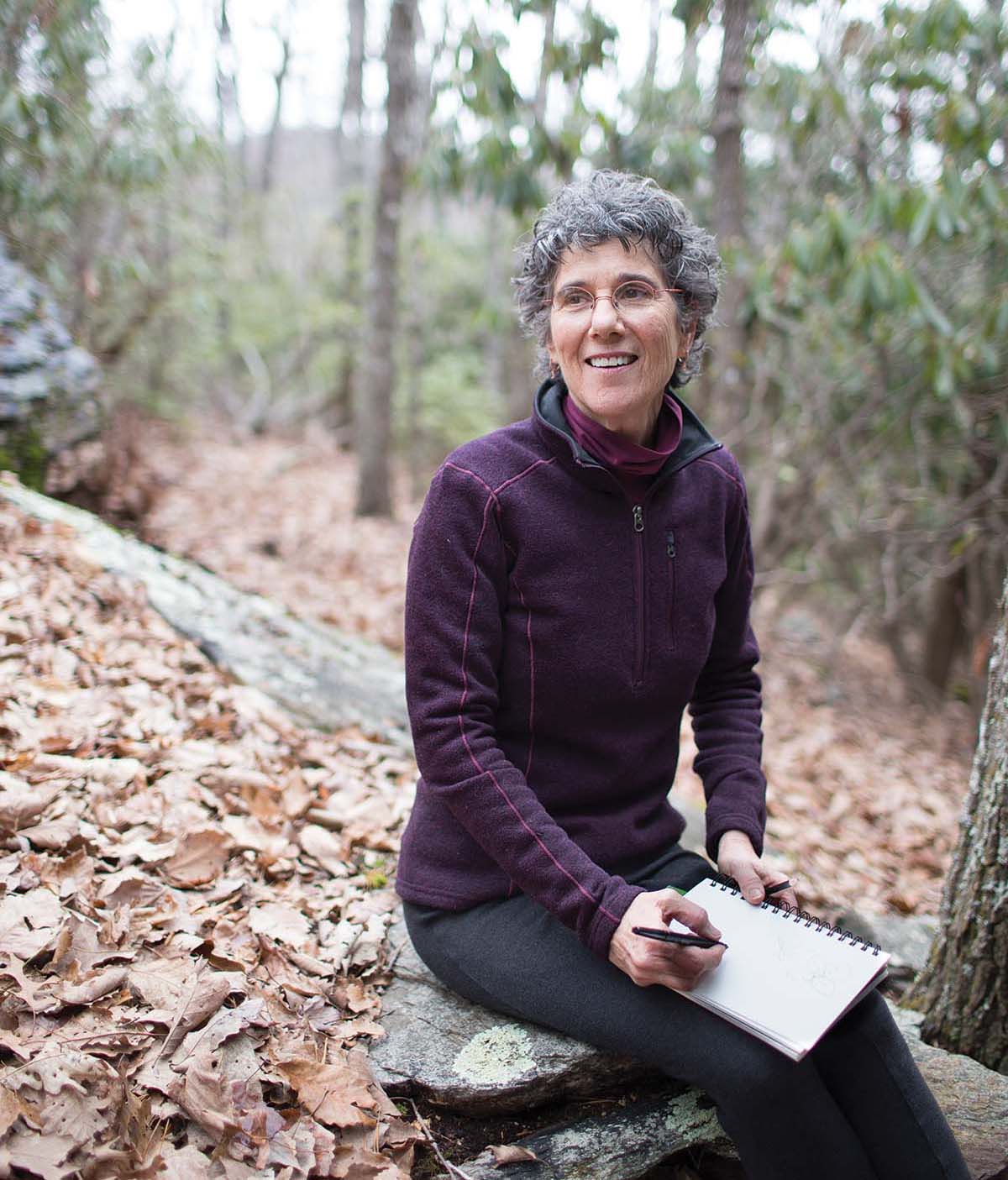
Before bunnies, Beatrix Potter majored in fungi. Known today for her darling, bushy-tailed characters, the British illustrator once penned many a mushroom.
She studied their taxonomy quite religiously and even germinated spores, but because of her womanhood — according to the higher-education restrictions of the Victorian era, she wasn’t allowed to present her dissertations — her career in mycology was thwarted.
Of course, Potter got the last laugh. Not only did her self-published edition of The Tale of Peter Rabbit sell out, but its pages offered beautiful, hyperrealistic botanical illustrations. More than a century later, Stephanie Sipp is following Potter’s example.
“My gift is that I can portray flowers, birds, and plants in a realistic, joyful way. I can bring an aliveness to them,” says Sipp, an interior designer turned nature-and-wildlife illustrator based in Black Mountain.
Sipp’s “In the Garden” collection includes bright, bold renderings of flora such as Turk’s-cap Lily, Yellow Lady’s Slipper, and Lenten Rose (the popular name of an early-season Hellebore). All compositions, done in ink, marker, and colored pencil, are to scale. They’re botanically correct while still feeling organic. A delicate illustration of bee balm is coupled with annotations written in slapdash rectangles. Morning Glories erupt from the page as effortlessly as they might climb up a fencepost, and pokeweed lays claim to the margins.

Sipp emphasizes what makes a flower unique — petal shape, leaf count, stem structure — and that occasionally requires some flair. “I might stretch it with a brighter pink or deeper yellow,” she says. Like Potter, she melds realism and whimsy to transport the viewer. A droll wasp may pause near coneflowers while a tomcat tiptoes past dandelions.
Still, flowers are her focus. “I’ve always been a flower drawer,” she says.
Sipp grew up in Rye, New York, spending balmy summer afternoons exploring the neighborhood pond and woods. The Common Blue Violets of her youth have evolved to symbolize a certain girlish innocence. Things are just more complicated in adulthood, and flowers are not immune. “We have six different types of violets that grow in Southern Appalachia, and just one in New York,” Sipp observes, leafing through an identification book. This particular text is 467 pages without the glossary.
Unlike many art forms, botanical illustration is more about knowing than feeling. And so, Sipp and her Australian Shepherd walk their driveway — positioned atop a 3,000-foot ridge — twice daily. When a flower catches her eye, Sipp pauses to take photographs. She then consults her field guides and other illustrators’ compositions, even compiling a slideshow of reference photos. Needless to say, her fountain pen (Sipp often uses sepia ink, a trick she borrowed from Potter) doesn’t touch paper until she is sure of the plant’s tenor.

In many ways, she is preserving a tradition tracing back to 70 CE, when Greek botanist Pedanius Dioscorides composed De Materia Medica to help readers identify plant species for medicinal purposes. “Flowers were first portrayed with dissections and roots. Their whole story was just splayed out,” says Sipp.
And so, in her nature-journaling classes at Red House Studios and Gallery, she teaches her students to draw for documentation. Shape guides help beginners create proportional renderings: A lesson on trillium, for example, uses a triangle to frame the species’ whorl of leaves. “Artists do a lot of manipulating and changing, making the subject their own. I think of myself as an illustrator, not necessarily an artist,” she explains.
Consider her rendering of Shaggy Stalked Bolete, a curious fungus with a curved stem and deep pores. Here, Sipp breaks from her stock palette, incorporating the drab grays of decaying leaves and the burgundies of the mushroom’s cap. Similar to Potter’s composition of Crimson Waxcap, Sipp’s illustration is sensible in its accuracy but romantic in narrative.
“The more we learn about what surrounds us,” says Sipp, “the more we appreciate it.” Surely, Sipp’s 19th-century counterpart, Ms. Potter, would agree.
Stephanie Sipp, Red House Studios and Gallery, 310 West State St., Black Mountain (a venue of the Swannanoa Valley Fine Arts League). Sipp is offering her nature-journaling lessons online using Zoom Thursday and Friday mornings through June. $25 per class plus supplies. She will be opening Sipp Drawing Studio online classes at the end of June. For more information, e-mail stephanie@stephaniesipp.com or visit stephaniesipp.com.
